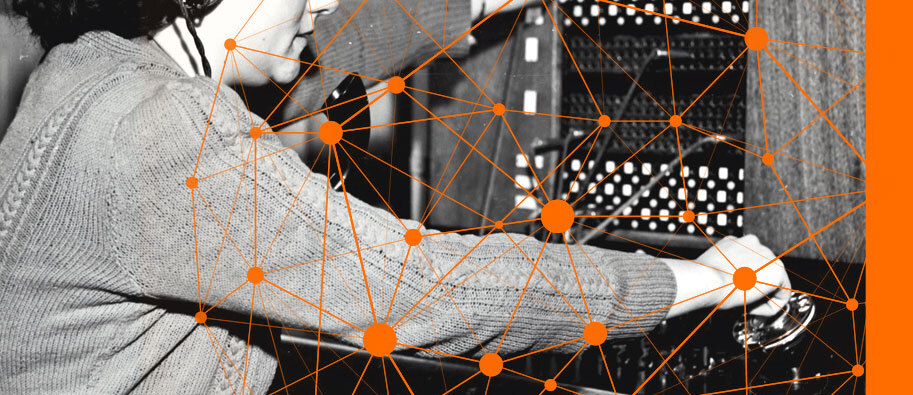Building with Switchboard


When the Wright Brothers first studied aeronautics in the early 20th century, they spent a great deal of time observing birds in flight. When they eventually designed the Flyer—the aircraft that would enable the first man-powered and piloted flight—the design incorporated many characteristics that resembled bird wings. Of course, the Wright Brothers didn’t exactly copy how birds flap their wings, and obviously, wings on aircrafts do not flutter. But they do twist to emulate bird wings—it makes them more agile and aerodynamic.
Could you apply the same line of thinking to the seismic change we’ve experienced shifting from in-person to remote work? Instead of trying to take a physical office (the birds) and put it in a virtual space (the aircraft)—what could remote work actually look like if it was more agile? More dynamic?
Switchboard wants to answer those questions.
Switchboard is an interactive platform for remote meetings and projects. While traditional video conferencing tools like Zoom and Google Meet work best for broadcasting (think one on one meetings and presentations with one speaker), Switchboard is all about spontaneous, messy, creative, and intuitive teamwork in real-time. When you open up the platform, the setup is like a canvas—anyone can open applications and share them with others. The core of the technology is a custom-built and cloud-based browser that lets you run (and work in) all of your favorite productivity apps—Notion, Figma, Linear, Canva, Rippling, etc.
Unlike traditional virtual meeting software, the default visual isn’t of participants’ faces. It’s a desktop—one that lives in the cloud and is specific to that individual meeting, so folks can naturally pick up exactly where they left off when they reopen the meeting, say, in a week. There’s also no clunky view-switching or manual screen sharing. Instead, the canvas lets participants interact in either “single-player” mode (where everyone sees the same thing) or “multiplayer” mode (where everyone can collaborate in real-time).
Our journey to help build Switchboard has its own key player: Chris Jones. Our co-founder Dan Portillo brought Chris—a seasoned engineer who was the co-creator of Firefox OS—into the fold at The General Partnership when Switchboard was still an idea that, according to Chris, “sounded a bit like science fiction.”
Within weeks, Dan introduced Chris to Switchboard’s founder, Amir Ashkenazi. Amir is a veteran builder—he created and sold Shopping.com (acquired by eBay), Adap.tv (acquired by AOL), and Tookee (acquired by LogMeIn before it even launched). But the inspiration for Switchboard came from somewhere unexpected—pandemic guitar lessons. Existing software failed to deliver on his more interactive needs, so naturally, he drummed up a vision to improve the experience.
In June of 2020, we deployed Chris to join Switchboard as interim Head of Product. In the fresh throes of remote work, Chris was experiencing all the challenges with traditional videoconferencing first-hand.
“On engineering teams, we would try to do demos of projects that we were working on, new features that we built, and interesting bugs that we fixed—there just wasn’t a medium to do that well,” he said. “The vision for Switchboard was very tantalizing as a solution. It would be very hard, but very possible, and that’s a great place to be.”
From a technical standpoint, the biggest challenges were around creating the shared, real-time control of Switchboard’s browsers in the cloud. But Chris was motivated to thoughtfully reimagine the experience of actually working together (with other people!) that can often get lost in a remote environment. After a year of working with the Switchboard team, Chris became the company’s full-time CTO.
Switchboard's team has strong product DNA—the team invested heavily in design early on, making the user experience as intuitive as possible. But the simplicity of the UX belies a complex software architecture and large technical surface area. For many engineering teams, building a real-time collaborative experience—aka "multiplayer"—is very challenging (there are entire companies built around multiplayer development kits). In multiplayer experiences, many users mutate shared states concurrently, and the end result must be consistent and durable. Real-time collaboration requires high performance and low latency in the face of unreliable network connections and implementing these features on Switchboard's large visual canvas in a web app, responsively and at 60fps, pushes web browser engines to the limit. Not to mention, the infrastructure also has to scale to millions of users.
Switchboard's app addresses all those challenges, while also allowing users to open a "cloud web browser" on the canvas to make any web app multiplayer, without the web app having to be aware at all. It’s worth noting that the normal challenges of implementing a multiplayer app increase quadratically when a user opens a cloud web browser on their Switchboard canvas. The cloud web browsers create another host of difficulties, such as synchronizing and encrypting profile data and securing infrastructure. But in solving these challenges to the point where customers can trust Switchboard with sensitive information, the company was granted several patents for its innovations.
Today, the team is working towards building the platform into the “get things done” experience that more closely resembles the in-person conference rooms of yore, with all the flexibility, comfort, and freedom that remote work brings.
The Switchboard beta is now open and free to all users. Check it out here.
Up Next
Welcome Dan Pupius to TheGP
An update to our engineering bench

Partnering with VectorWare
We’re entering the GPU-native era.
